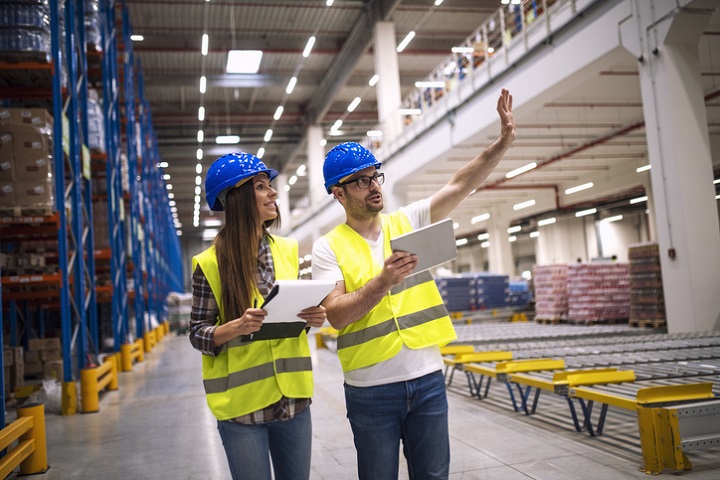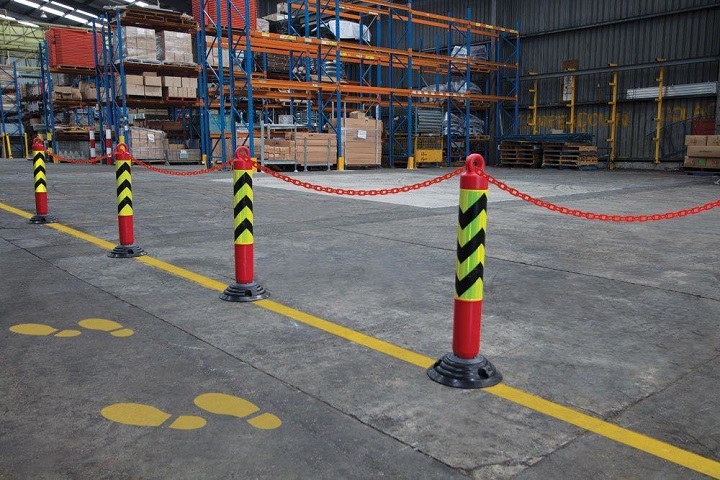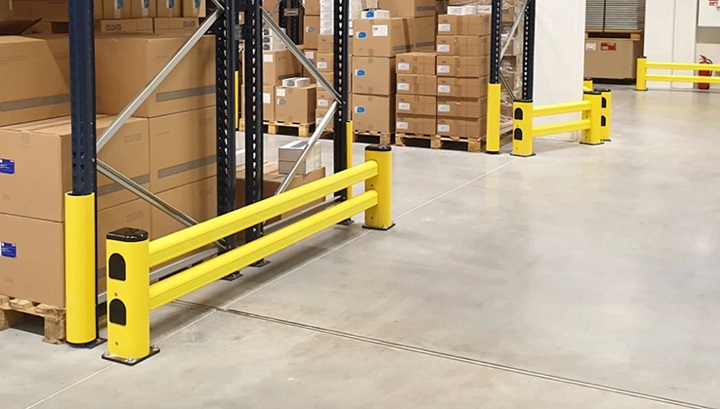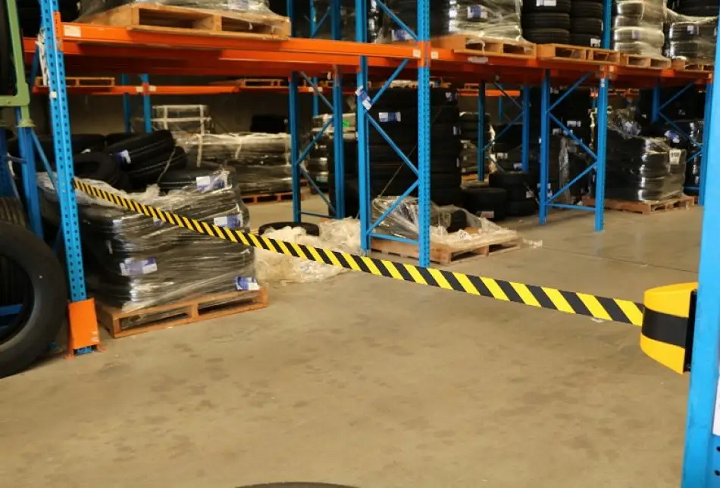There’s no denying that the industrial and warehousing sectors are fast-paced and often dangerous working environments, with numerous hazards and risks to be aware of. More often than not, workers in these industries are more prone to accidents and injuries due to the nature of their jobs. This isn’t necessarily a surprise either; after all, constant machinery use and tight aisles can be tricky to navigate for even the most experienced warehouse employee.
As such, taking proper preventative measures and following strict safety guidelines is paramount for any successful work environment. At the heart of these safety regulations lies the need to be conscious of inventory management, warehouse trolley controls, and, of course, installing proper safety barriers on the premises.

What Are the Basics of Warehouse Safety?
In a nutshell, safety barriers consist of a meticulously designed combination of products that are constructed to cordon off certain areas and keep workers safe from any potential hazards. They’re an excellent way to both provide protection and improve the visibility of your warehouse, especially if you have a large area.
Expanding Barriers

These are maze-like barriers designed to keep restricted areas secure at all times. The panels themselves can be configured in a variety of different ways and are typically fitted with castor wheels for quick and easy reconfiguration.
They’re installed directly on top of the ground, with the panels unfolding in an outward-facing position. They can either fully retract into the wall and out of the way, or they can remain in a closed position, depending on your preference. Their flexible nature and quick installation provide a fast and easy way of closing off restricted areas.
Safety Swing Gates
These are quite similar to the entrance gates you see in supermarkets when you’re entering and exiting the store. They provide a secure way of controlling access to certain areas, reducing the risk of potential accidents or injuries on your premises. The gates can open and close remotely or manually, with smooth and consistent movement.
As far as the installation process goes, these gates require a bit of preparatory work. The area should be inspected and levelled first before the gate is fitted securely into place. Once the gate is installed, it should be tested thoroughly to ensure everything is in working order and that no further maintenance is required.
Fixed Safety Bollards
Next up, we have a set of bright yellow bollards, which are designed to serve as markers for dangerous or restricted areas. They’re intended to act as a visual deterrent, effectively minimising the chances of unauthorised access.
The bollards tend to be made from durable plastic, with a tall and slim design that makes them highly visible. They can be installed on any type of surface, both indoors and outdoors, with a range of different mounting accessories available, such as deck mounts, flanges, or surface plates. The spherical shape at the top of the bollard also helps to prevent it from becoming a tripping hazard.
T-Top Plastic Bollards

These lightweight and durable plastic bollards are designed to offer a highly visible way of marking out potentially hazardous areas. The bright orange colour makes them stand out from other items in the warehouse, while their unique T-shaped design helps to minimise the chances of anyone tripping over them.
They’re easy to install and can be mounted on a range of different surfaces, such as concrete, asphalt, or earth. Once in place, they can be filled with sand or gravel to add extra stability and weight, or the bollards can be secured with anchor bolts.
Pallet Racking Frame End Protectors

If you’ve ever stacked pallets or loaded a truck, you’ll know that the delicate frame at the end of each pallet can be susceptible to damage. Not only can this type of damage be expensive to repair, but it can also create a dangerous situation if the frame collapses.
If you want to prevent this kind of damage from occuring, you can install frame end protectors. These are designed to fit snugly over the end of each pallet and provide a layer of protection against any potential damage. They’re essentially like a bumper guard for the frame, preventing it from getting bent out of shape.
Guard Rail Fencing
When bollards and other markers aren’t enough or there’s a larger area to cover, guardrail fencing is a fantastic alternative. It’s a metal railing that is installed in strategic positions to keep people away from potentially hazardous areas.
The fence itself is made of strong and durable materials such as steel or aluminium, and it’s typically finished in a bright and visible colour. The posts need to be secured into the ground using either concrete or screws, and the panels are then attached to each post to create a continuous barrier.
Wall Belt Receiver

A somewhat less cumbersome type of warehouse safety barrier is the wall belt receiver. It’s a metal or plastic plate that is mounted onto the wall and has an indentation in the shape of a belt buckle.
The idea is that when someone enters or leaves a restricted area, they have to attach the long belt that comes from the other side of the wall or door to the receiver. It clips into place and then can’t be easily removed, providing a secure way of controlling access to potentially dangerous areas.
Rubber Corner Protectors
If you’re looking for a way to minimise the chances of any damage occuring in your warehouse, rubber corner protectors are an excellent option. They’re either glued or screwed onto the corners of shelves, racks, and other structures to provide an extra layer of protection against any potential bumps or knocks.
These protectors are meant to be flexible enough to take the impact of a collision, while also providing a visual deterrent that will help remind people to take extra care when moving around the warehouse. They can be as long or short as you need, and they come in a range of different shapes and sizes to suit any type of application.